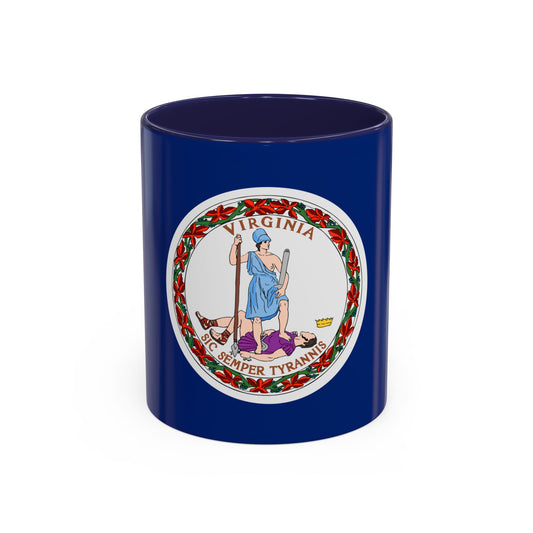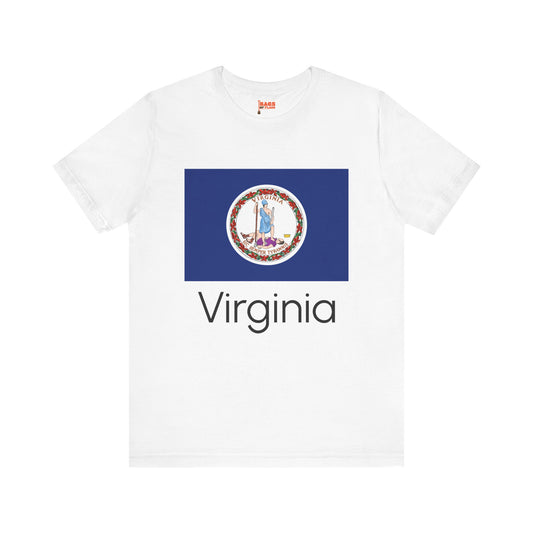-
Virginia Backpack
Regular price $59.79 USDRegular priceUnit price / per -
Virginia Pillow
Regular price $22.65 USDRegular priceUnit price / per -
Virginia Mug
Regular price $11.65 USDRegular priceUnit price / per -
Virginia Trucker Cap
Regular price $14.90 USDRegular priceUnit price / per -
Virginia Leather Patch Hat
Regular price $18.85 USDRegular priceUnit price / per -
Virginia Flag Sweatshirt
Regular price $34.15 USDRegular priceUnit price / per -
Virginia Inspired Sweatshirt
Regular price $34.15 USDRegular priceUnit price / per -
Virginia Sweatshirt
Regular price $34.15 USDRegular priceUnit price / per -
Virginia Hoodies
Regular price $34.40 USDRegular priceUnit price / per -
Virginia T-shirts
Regular price $22.79 USDRegular priceUnit price / per -
Virginia Flag Hoodies
Regular price $34.40 USDRegular priceUnit price / per -
Virginia Inspired Hoodie
Regular price $34.40 USDRegular priceUnit price / per -
Virginia Inspired T-shirt
Regular price $22.79 USDRegular priceUnit price / per -
Virginia Flag T-shirts
Regular price $22.79 USDRegular priceUnit price / per
Collection: US State: Virginia VA flag
The Virginia flag, also known as the flag of Virginia, is a symbol of pride and history for the state. Its design and colors hold significant meaning, reflecting the state's rich heritage and values. We will delve into the history, symbolism, current relevance, and controversies surrounding the Virginia flag.
Overview of the Virginia Flag

The flag of Virginia showcases a deep blue background, setting a striking contrast with the central circular emblem that commands attention. This emblem is a powerful depiction of Virtus, the Roman goddess symbolizing virtue, who is seen standing in a posture of victory over a fallen tyrant, illustrating the defeat of tyranny.
Virtus is portrayed with a spear in one hand and a sword in the other, reinforcing the message of vigilance and strength. Beneath this scene, the Latin motto "Sic Semper Tyrannis," translates to "Thus Always to Tyrants," boldly encircles the imagery. This phrase underscores the theme of liberty and justice and is a stark reminder of the state's stance against oppression. The elements combined in the flag's design vividly narrate Virginia's commitment to these principles:
- Deep Blue Field: Symbolizes loyalty, justice, and truth.
- Central Emblem: Features Virtus standing over a tyrant, signifying victory over oppression.
- Spear and Sword: Emphasize readiness to defend state virtues.
- Latin Motto ("Sic Semper Tyrannis"): "Thus Always to Tyrants," a declaration against tyranny.
Historical Context of the Virginia Flag
The historical backdrop of the Virginia flag is steeped in significant events that have shaped its meaning and design over the years:
- Adoption in 1861: The current Virginia flag was officially adopted during the Civil War when Virginia seceded from the Union to join the Confederacy.
- Pre-1861 Flags: Before settling on its current design, Virginia used various flags, all of which had a different powerful symbolism and association with state identity than the current flag.
- Changes Over Time: Since its adoption, the flag has seen minor modifications, primarily concerning the emblem's size and precise positioning. These changes reflect the state's evolving identity while maintaining the core symbols of virtue and defiance against tyranny.
- Civil War Era Symbolism: The flag's adoption period coincided with Virginia's declaration of secession, making it a potent symbol of the state's Confederate alignment during the Civil War. This timing and context have contributed to the flag's complex historical significance.
Symbolism Behind the Virginia Flag
The Virginia flag is imbued with rich symbolism that transcends its colors and images, each element carefully chosen to represent the state's core values and history. Here's a deeper look into the meanings embedded in the flag:
- Deep Blue Field: It represents loyalty, justice, and truth, echoing the state's commitment to these eternal principles.
- Central Emblem and Figures: Virtus, the Roman goddess of virtue, symbolizes the moral standards and courage the state aspires to uphold. The fallen tyrant at Virtus's feet vividly represents Virginia's triumph over oppression and tyranny. Virtus’s attire, a breastplate but no helmet, signifies that she is in a state of calm readiness, not active aggression.
- Spear and Sword: Virtus's left-hand holds a spear, while her right-hand holds a sword, emphasizing her readiness and willingness to defend the state's virtues and principles.
- Latin Motto ("Sic Semper Tyrannis" ): This motto translates to "Thus Always to Tyrants," a powerful declaration against tyranny and oppression. It encapsulates Virginia's historical stance on freedom and resistance against unjust rule.
This symbolic framework reflects Virginia's ideals and serves as a constant reminder of the state's history and the values it continues to stand for.
Current Relevance of the Virginia Flag
Today, the Virginia flag remains prominent in public life and discourse, reflecting the state's history and values across various contexts. Its current uses and the discussions surrounding it illustrate both its enduring legacy and the complexities of its symbolism:
- Displayed Across the Commonwealth: The flag is routinely flown at state buildings, schools, and public spaces, symbolizing official recognition and state pride.
- Ceremonial Uses: It plays a crucial role in state ceremonies, military honors, and national events, representing Virginia's identity and history.
- Symbol of Heritage: Many Virginians view the flag as a symbol of their cultural and historical heritage, tying them to past generations and the state's pivotal role in American history.
- Controversies and Discussions: The flag's historical associations, especially its adoption during the Civil War era, ignite debates about its representation and values. These discussions often reflect broader national conversations about memory, history, and identity. Efforts to reinterpret or modify the flag's symbolism to reflect contemporary values of unity and diversity have sparked debate, highlighting the flag's role in ongoing conversations about Virginia's and America's evolving identity.
- Educational Tool: The flag is used in educational settings to discuss Virginia's history, the Civil War, and the principles of liberty and justice, catalyzing dialogue on civic values and responsibilities.
Additional Facts About the Virginia Flag
- The Virginia flag must be prominently displayed at all state-owned facilities, a mandate that underscores its significance within the Commonwealth.
- A notable debate in 2001 centered around the proposal to add "e Pluribus Unum" to the flag, aiming to highlight themes of unity and diversity, reflecting ongoing discussions about the flag's contemporary relevance and symbolism.
- Specific handling and display protocols are prescribed by state law, ensuring the flag is treated with respect and dignity, which includes how it's raised, lowered, and maintained.
- Unlike many other state flags, the Virginia flag's emblem features a figure of victory over tyranny rather than traditional state symbols or crests, making it unique in its representation of state values and history.
- The flag is a staple at various state and national celebrations, including Independence Day and Veterans Day, where it serves as a reminder of Virginia's integral role in American heritage and its contributions to the nation's military history.




























